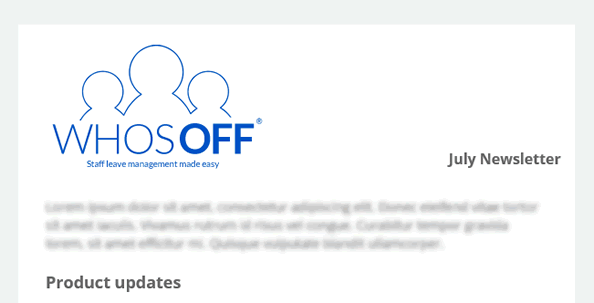Staff leave is often taken for granted within companies; once you’ve put a framework in place, it tends to run itself – right? However, increasing evidence is showing that the cost of not paying attention to the way holiday is managed is much greater than most businesses realise.
Depending on your industry, poor leave management can literally make the difference between life and death. A recent report by NHS Improvement revealed that an extra 300,000 essential operations could be carried out in the UK every single year if surgeons were better at organising their holiday. The NHS is now recommending a 6-4-2 model of working; agree leave six weeks ahead of time, circulate surgical lists four weeks in advance, then double check the roster two weeks before surgery.
Even in sectors where stakes aren’t quite so high, the impact of lacklustre leave management can be huge to both your productivity and your profit margin. So how do you stop holiday becoming a drain on your business? Here are some of our expert tips:
1. Set a clear holiday request policy – with deadlines
One of the key challenges that the NHS Improvement study identified was the effect of employees taking holiday at short notice. Setting guidelines not just on how much leave staff are allowed, but also how much notice they need to give, can help to alleviate this problem.
There may need to be exceptions to your rules, and this is fine on occasion, but many companies find managing leave informally means that colleagues take advantage of flexible systems. Therefore, the best solution might be to start using an online holiday management system, which formalises the process and encourages staff to take your structure seriously.2. Make it easy for employees to see who’s off at any point in time
Another major drain on company productivity is multiple members of staff being on leave at any point in time. Particularly during peak periods such as school holidays and the height of summer, it’s easy for several people in one department to be off at the same time – but not realise until they don’t show up to work.
This is another argument in favour of establishing a formal leave management process, controlled by online software. If requests are approved and logged through a central portal, which all your workforce have access to, they can see at-a-glance whether anyone is already on holiday when they wish to book time off.
Coupled with a clear set of deadlines as to when holiday must be requested, your HR team or management personnel will have plenty of time to double-check who is already off before approving any leave requests.
3. Speed up the approval and editing process
Mistakes often creep in when management staff are jumping through administrative hoops when they’re already very busy. If your company operates a manual, paper-based system for managing staff leave, chances are you’ve been caught out by someone’s form getting lost in an in-tray, or an accidental calendar clash when people are working from different versions of the same spreadsheet.
Moving over to an online leave management solution removes all these margins for error, creating a clean and simple approval process for senior members of staff. Whether it’s an HR team or individual line managers in charge of signing-off holiday, a digital platform ensures they are sent notifications and reminders when a request is made, and that an automatic response is sent to the relevant team member when their application has been approved or denied.
4. Prepare the wider workforce to support planned absences
The surgical example shows that it’s not necessarily people taking holiday that causes problems for organisations; it’s the impact of poor planning for when people are absent. With a better structure for managing leave in place, you have plenty of time to prepare.
One of the key strengths that a central holiday management platform offers is the ability to see instantly who is going to be off throughout the year. This means your senior team can sit down month by month, look at staff availability, and distribute workload accordingly.
For some companies, this will significantly improve the rostering process. If you have customer service teams, within retail or call centres for example, it avoids accidentally assigning a shift to someone who has booked time off.
Even within the office environment, complete visibility of annual leave plans can assist with project management. It also helps you support members of staff creating handovers for the period in which they are due to be out of the office, to ensure a continuous standard of work.
Cut the cost of poor leave management by onboarding digital leave management software from WhosOff. You can try WhosOff for free to see the benefits – we won’t lock you into any long-term contracts or commitments.
Photo by Pixabay from Pexels

